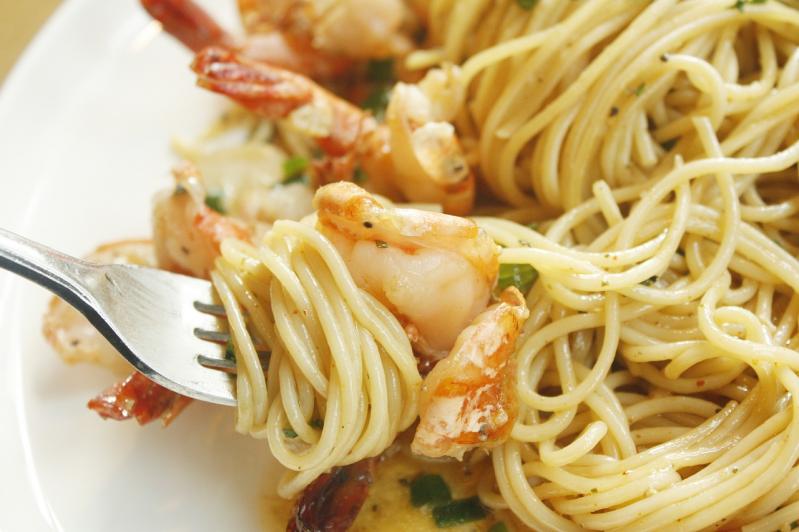"Lake shrimp are always used in making this gumbo, the river shrimp being too small and delicate. Purchase three to four pounds, or about 100 shrimp, for there are always smaller shrimp in the pile which, when cooked, amount to little or nothing.”
- "The Picayune Creole Cookbook," 1901 edition
Those were the days, my friend, we thought they’d never end, but the times a recipe for eight people contained 100 shrimp have passed forever. There must have been an endless supply of America’s favorite crustacean around New Orleans (the city where the Picayune newspaper published this cookbook). I know it seemed endless when I was growing up in Charleston, S.C., and shrimp were so plentiful we used them for bait. Also, little bowls of boiled shrimp were set out like peanuts to encourage patrons to drink more beer at the little cafes along the Carolina beaches.
Wondering what has happened to the nation’s once-vast shrimp supply, I called up John Haessler at the Seafood Shop in Wainscott. He explained that giant corporations now own most of the shrimp boats, and even though shrimp are easily farmed, the supply can be controlled by freezing them and releasing them to the retailers in the amount and at the price the monster corporations set. So now you know. Shrimp are expensive and will remain so, therefore no more family gumbo recipes calling for 100 shrimp.
Shrimp are sold by the “count” per pound, with the larger “jumbo" shrimp, which contain about 12 to the pound, going for much more money than the smaller (1b to 21 count), even though they are the same quality. Quality varies quite a lot in shrimp. Unfortunately, cheap ones are mushy and spotted and are no bargain at any price. When economy is a consideration, it is always best to buy the smaller shrimp from a reputable dealer of first-class seafood.
Shrimp and Scallop Pasta
This is a cross-cultural adventure with lots of action. The fresh pasta is, of course, Italian, but the topping is an Asian stir-fry of scallops, shrimp, asparagus, scallions, and chives, all lightly kissed with garlic. It is one of my attempts to cut down on the amount of shrimp needed for one dish. Serves four.
2 (10 oz.) packages red pepper linguine
1/2 cup olive oil
2 cloves garlic
1/2 lb. small shrimp
1/2 lb. sea scallops
3 large stalks asparagus
3 or 4 scallions, sliced in rings
Salt and red pepper flakes
1 Tbsp. minced chives
The red pepper linguine is a new product (new to me, anyway), sold in the fresh pasta case at my local supermarket in Bridgehampton. Despite its “red pepper” claim, it isn’t spicy, though it is a lovely rose color. It cooks in about 60 seconds after the water returns to the boil, so make the sauce first.
Peel and bruise the garlic, then saute it slowly in the olive oil until it is a golden color. Remove and discard. Peel and devein the shrimp and cut in scallops into small, bite-size pieces. Break off the tough ends, then peel and cut the asparagus Oriental style, into angled lengths about one inch long. Saute the shrimp, scallops, asparagus, and scallions in the olive oil for about two minutes — just until the shrimp are pink and the scallops opaque. Season to taste with salt and red pepper flakes, then divide among four heated bowls of cooked red pepper linguine. Sprinkle the servings with minced chives.





